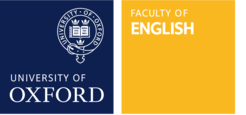The article reassesses Margaret Clunies Ross’s highly influential argument for a pseudo-procreative ideology inherent in Old Norse creation myths, which valorised male spiritual and cultural creative endeavours as superior to the ordinary processes of physiological female reproduction. The article suggests that such a paradigm both fails to appreciate the major cultural significance of physiological childbirth and imposes on Old Norse beliefs a modern, scientific evaluation of what is ‘pseudo’ and what is real, which distorts their perspectives on procreation and birth. An alternative understanding of pseudo-procreation is then proposed, focusing on procreative events that are considered false or unnatural within their own narrative contexts. Two examples are explored in detail: the adoption episodes in Ála flekks saga and Finnboga saga in which elderly women pretend to give birth to abandoned children whom their husbands have rescued; and the bosom serpent episodes in Morkinskinna and Guðmundar saga D, in which women are found to have ingested and incubated an ormr (serpent), which must then be drawn out of them, usually through the mouth.
pseudo-procreation
,Guðmundar saga D
,infant exposure
,bosom serpents
,morkinskinna
,finnboga saga
,Old Norse
,childbirth
,Ála flekks saga



